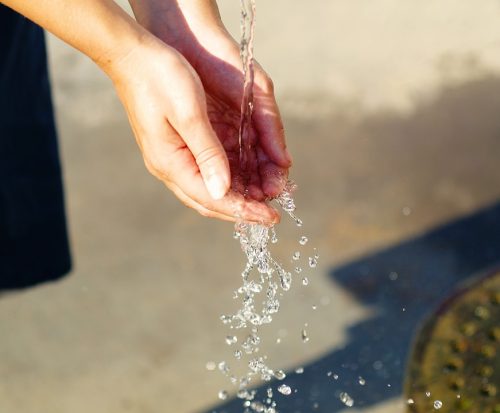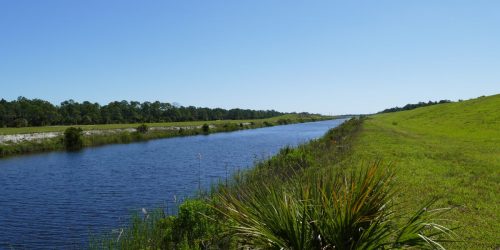Florida is home to more than 7,800 freshwater lakes, 1,700 streams and rivers, 700 springs, 11 million acres of wetlands and five major aquifer systems. Each of these sources supply freshwater to a Florida’s agricultural sector, 20 million residents and our natural environment.
In 1972, Florida lawmakers established the Florida Water Resources Act, which called for the establishment of five water management districts around the state that would be responsible for flood control and managing the state’s water resources.
“The Act was in response to a growing need for a more comprehensive approach to water management in the State, and received recognition as a model water statute from the National Water Commission for its regional approach and comprehensive scope,” reads the South Florida Water Management District website.
The districts’ governing boards are unpaid citizen volunteers appointed by the governor and confirmed by the Florida Senate. They serve four year terms. The governing board also appoints the district’s executive director, who is also confirmed by the Senate.

Ann Shortelle, executive director of the St. Johns River Water Management District, said Florida’s water comes in fits and starts, making management decisions in our state quite complex.
“The challenge in Florida is we tend to get our water in pretty inconvenient chunks. A lot, and then nothing,” Shortelle said. “So, we have to create a system where we’re not flooding when the water is plentiful and not over using when it’s not plentiful.”
Through planning, permitting and restoration projects, the five districts use science to make decisions that will ensure a long-term supply of drinking water and protect and restore the health of our state’s water bodies.
The districts also rely on public feedback from residents who value their waterways.
Here are 5 reasons to get involved with your regional water management district.
 1. Florida’s water is publicly owned.
1. Florida’s water is publicly owned.
Florida is special in that way, Shortelle said. In some states, water can be privately owned.
“Water in Florida is held in trust for the citizens to make sure that we’re protecting these natural resources.”
That means we all have a responsibility to manage it in a way that meets our needs as well as the needs of our natural environment.
Which district do I live in?2. The districts are responsible for water supply planning throughout the state.
This takes serious planning ahead, 20 years to be exact. In order to create a 20-year Regional Water Supply plan that meets all existing and future water supply needs, district scientists and engineers use scientific models to predict average rainfall, how many people will live in the state, where they will live and how much water will be needed.
Visit the links below to learn more about your 20-year regional water supply plan.
- Northwest Florida Water Management District Regional Water Supply Plan
- Suwannee River Water Management District Regional Water Supply Plan
- St. Johns River Water Management District Regional Water Supply Plan
- Southwest Florida Water Management District Regional Water Supply Plan
- South Florida Water Management District Regional Water Supply Plan
3. The districts are responsible for performing water quality monitoring, assessment and helping fund the construction of water quality projects.
“We regularly measure water levels, flow and quality,” Shortelle said. “We use these data to make sure our recommendations are underpinned by the best science we can bring to the table.”
And, the monitoring data are public record.
“Residents can use the information to acquire a basic knowledge of groundwater, springs and water bodies in which they have an interest,” reads the St. Johns Water Management District website.
Click the following links to explore water quality data in your district.
- Northwest Florida Water Management District Water Quality Data
- Suwannee River Water Management District Water Quality Data
- Johns River Water Management District Water Quality Data
- South Florida Water Management District Water Quality Data
- Southwest Florida Water Management District Water Quality Data

4. The districts construct, operate and maintain flood protection structures throughout their region.
They are also responsible for protecting floodplains and wetlands that provide storage for flood waters.
“Through their permitting programs, the districts also make sure that stormwater is managed on development sites and that new drainage ditches or significant changes to existing ditches are coordinated regionally,” reads the St. Johns Water Management District website.
Keeping in close communication with local governments, the districts help integrate these flood protection elements into city and county comprehensive land use plans.
To learn more about the districts’ role in flood control, visit:
Flood Control5. The districts are responsible for managing water in a way that protects natural systems.
Every decision and plan by the water management district must also take into account Florida’s natural ecosystems. Shortelle said one of the ways they do this is by taking the lead on restoration projects. In the past, Florida was drained and ditched to make way for development.
“So we take on projects that begin to restore those lands and the resources so that they function more naturally,” she said.
“There’s a lot of water storage in wetlands that was done away with ditching and draining. By restoring those wetlands and keeping the water on those wetlands, we help to recharge the aquifer and control flooding downstream.”
The districts also implement the state’s Minimum Flows and Levels Program, a Florida Statute which requires the districts and the Florida Department of Environmental Protection to establish minimum water flows and levels for aquifers, surface watercourses and other surface water bodies to identify the limit at which further withdrawals would be significantly harmful to the water resources or ecology of the area.
How can I get involved?
Shortelle notes that making complex water decisions for a state of more than 20 million people is not without challenges. And, it’s important for Floridians to stay informed, especially about a resource as crucial as water.
“The whole state had a pretty challenging year last year, with the red tides and blue-green algae blooms,” Shortelle said. “We want to help people understand that we all have a footprint and we all have an effect, however small it might be. We’re all in this together.”
Shortelle said there are multiple ways to get involved in your local district.
- Volunteer. Most districts maintain properties that help protect natural resources and are always seeking volunteers to help maintain the areas. Visit your local district website to see what opportunities are available.
- Pick an issue that you’re passionate about and learn more. Shortelle said there is a point person in every district for every issue whether it be water quality, the springs or Lake Okeechobee discharges. If you want to learn more about a certain issue, simply send your district an email and they will connect you to the right point person.Are you a teacher? Several of the districts also provide free educational resources to bring to your classroom. Visit the links below to learn more.
- Attend public meetings and let your voice be heard. Public general board meetings are held regularly and are posted on the districts’ websites. These public meetings give individual citizens the time and opportunity to offer comments and ideas to the governing boards. Some of these meetings are also broadcast via webinar or live stream.
- Make water conservation a way of life. Help protect our freshwater resources by following these water-saving tips.